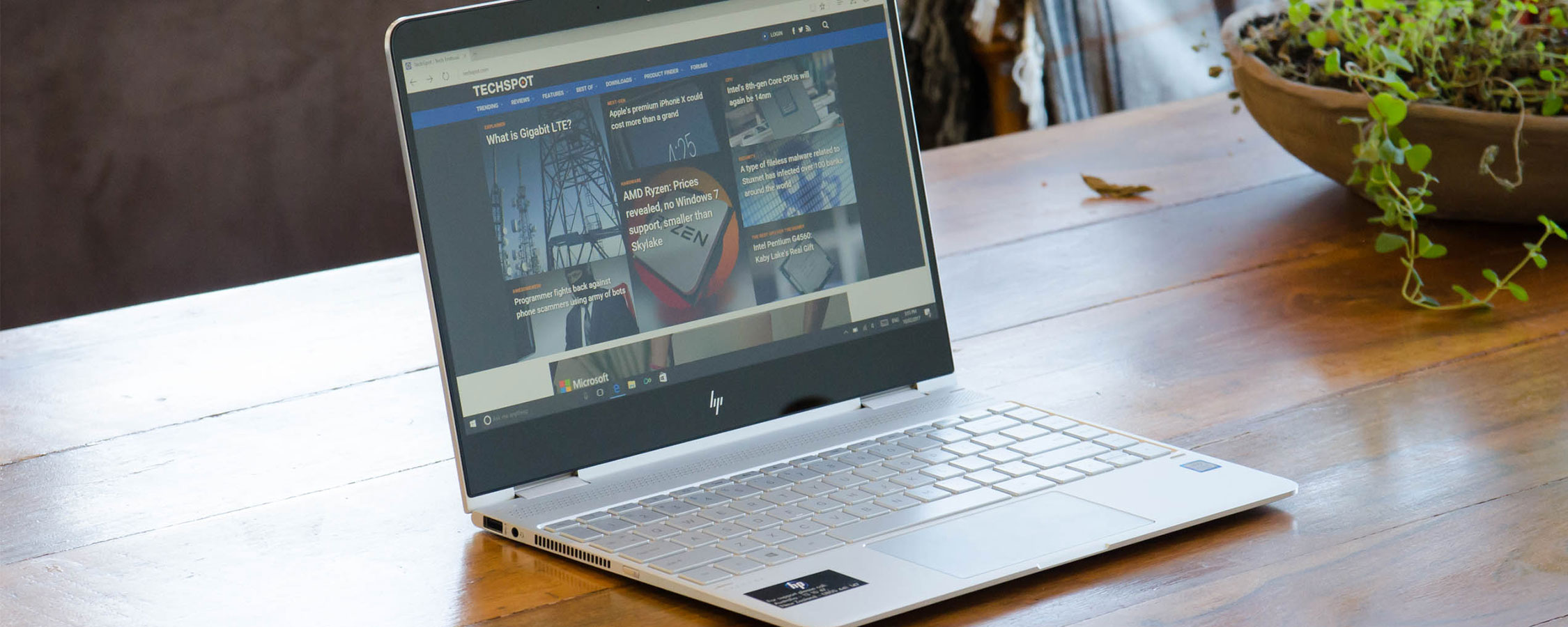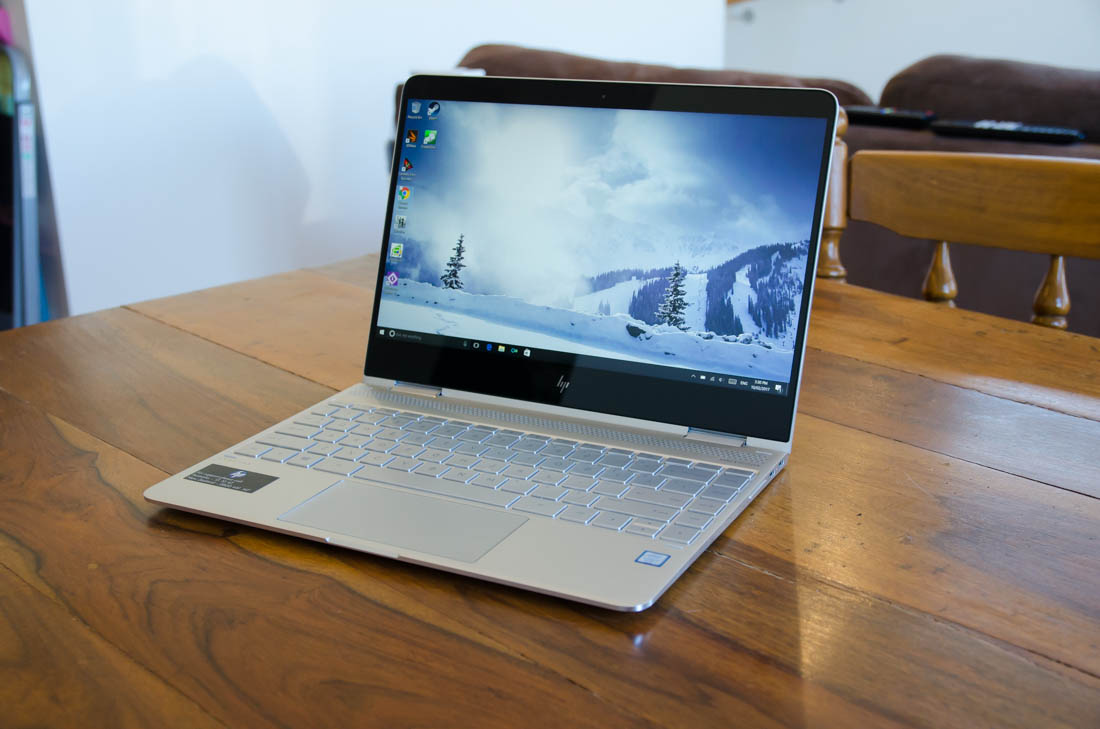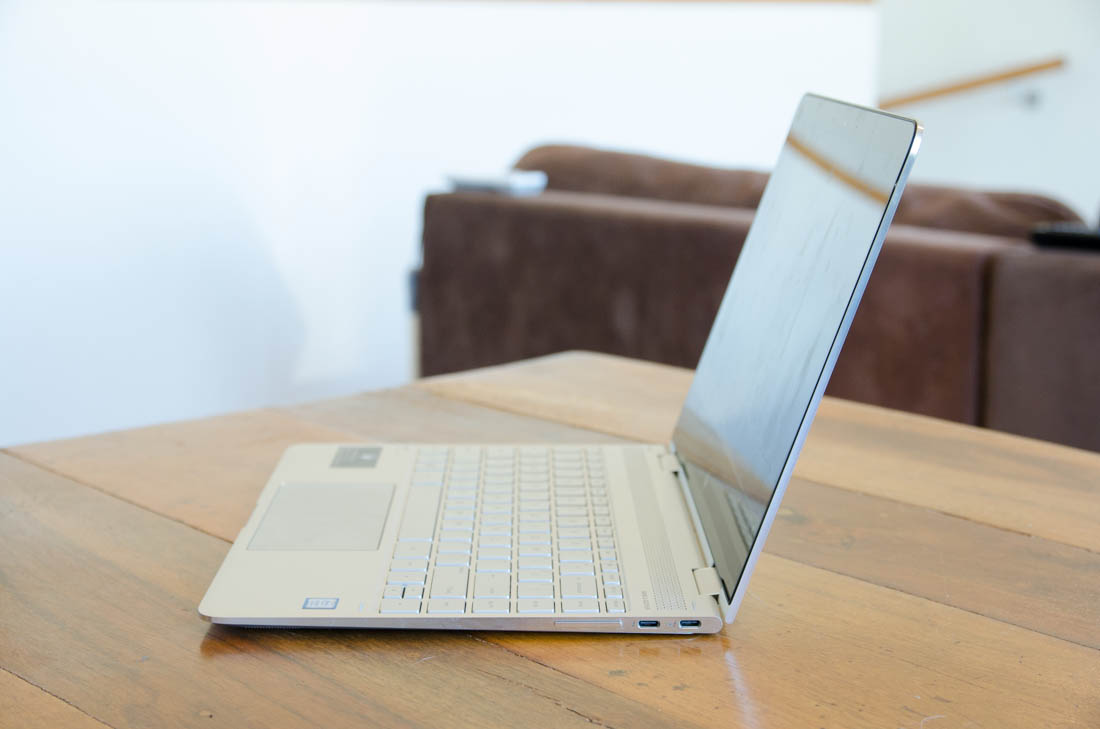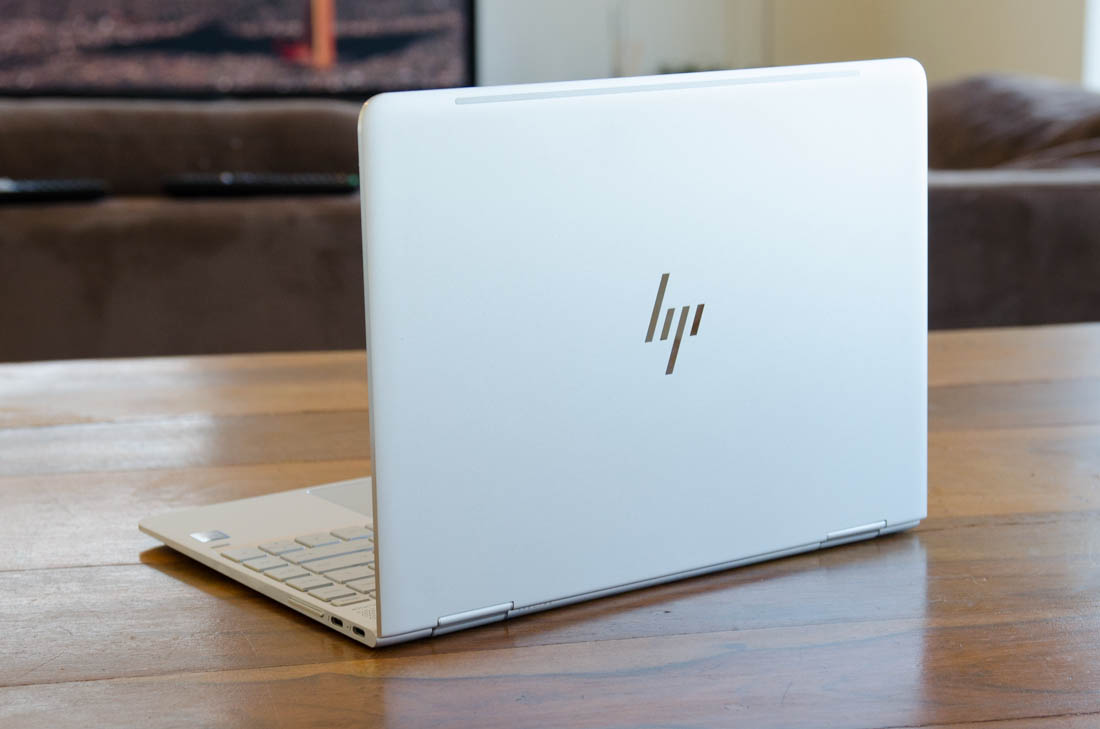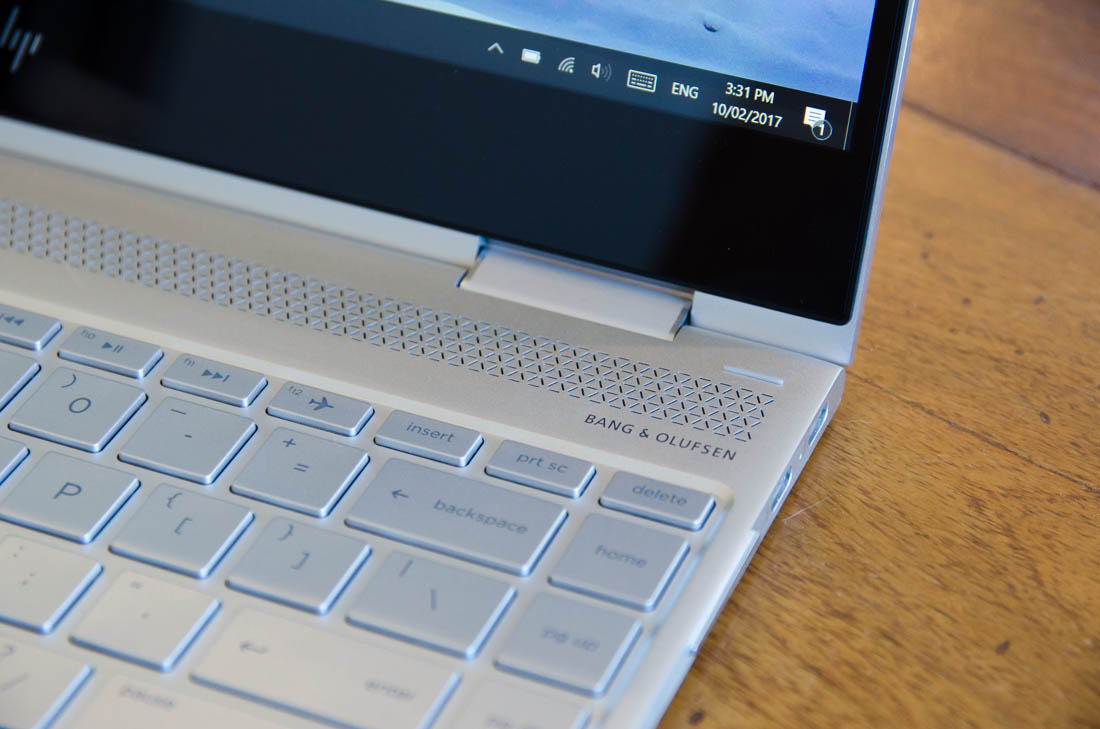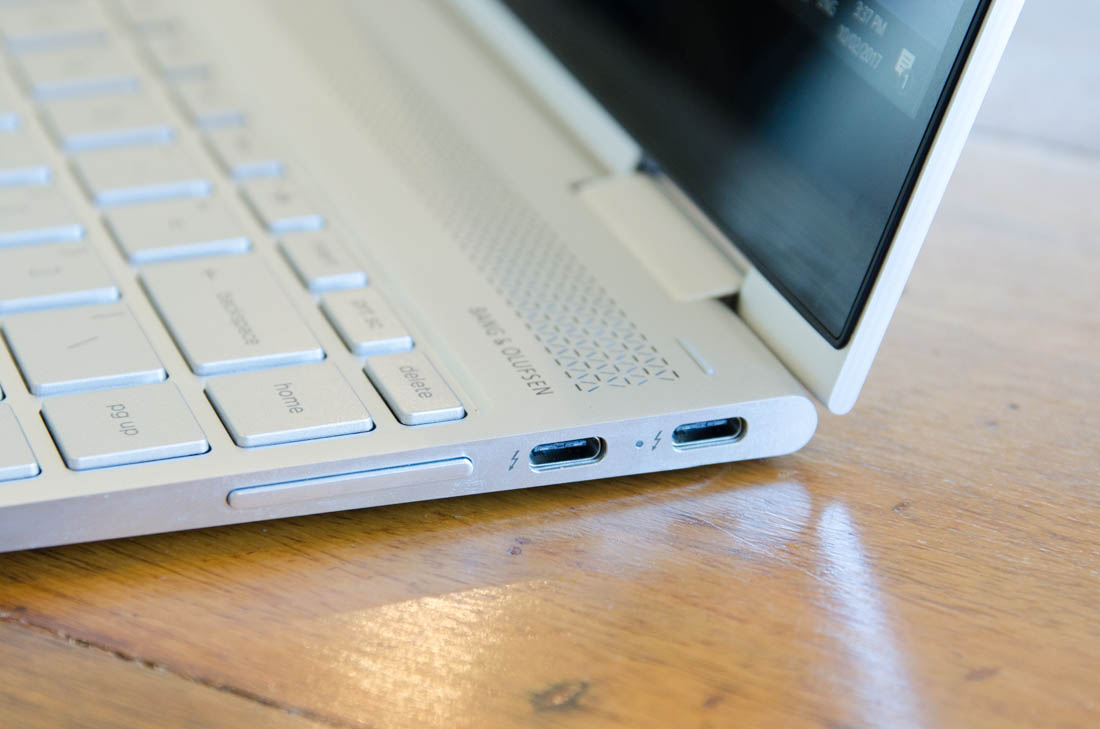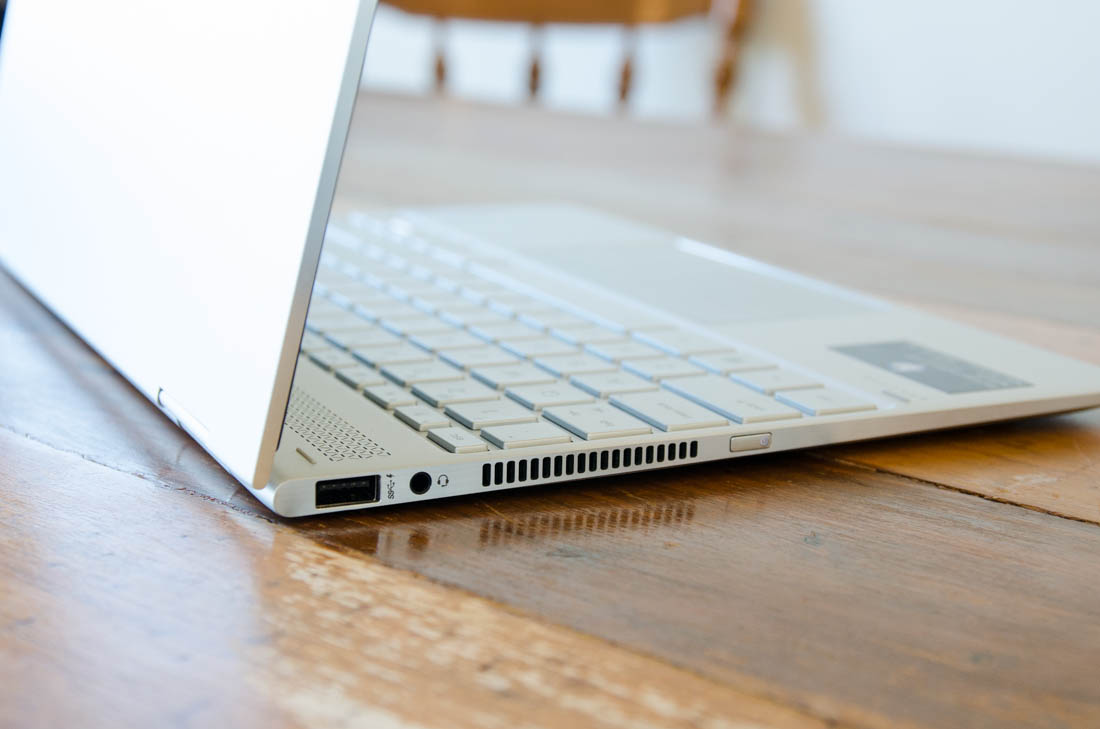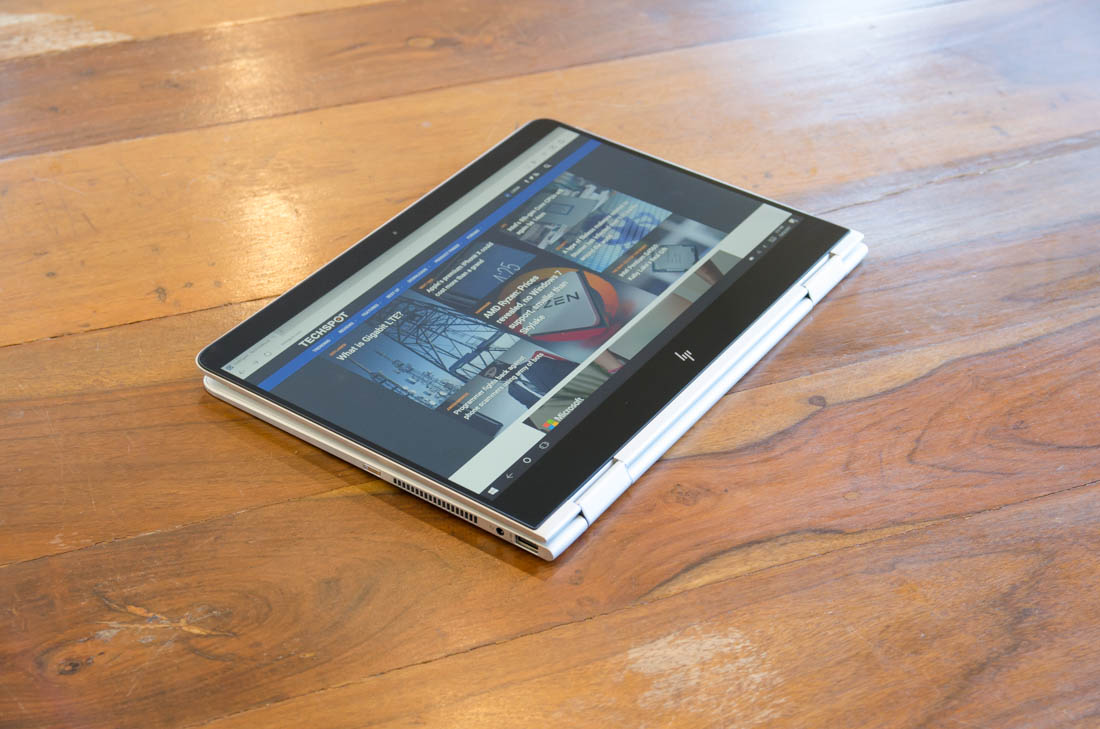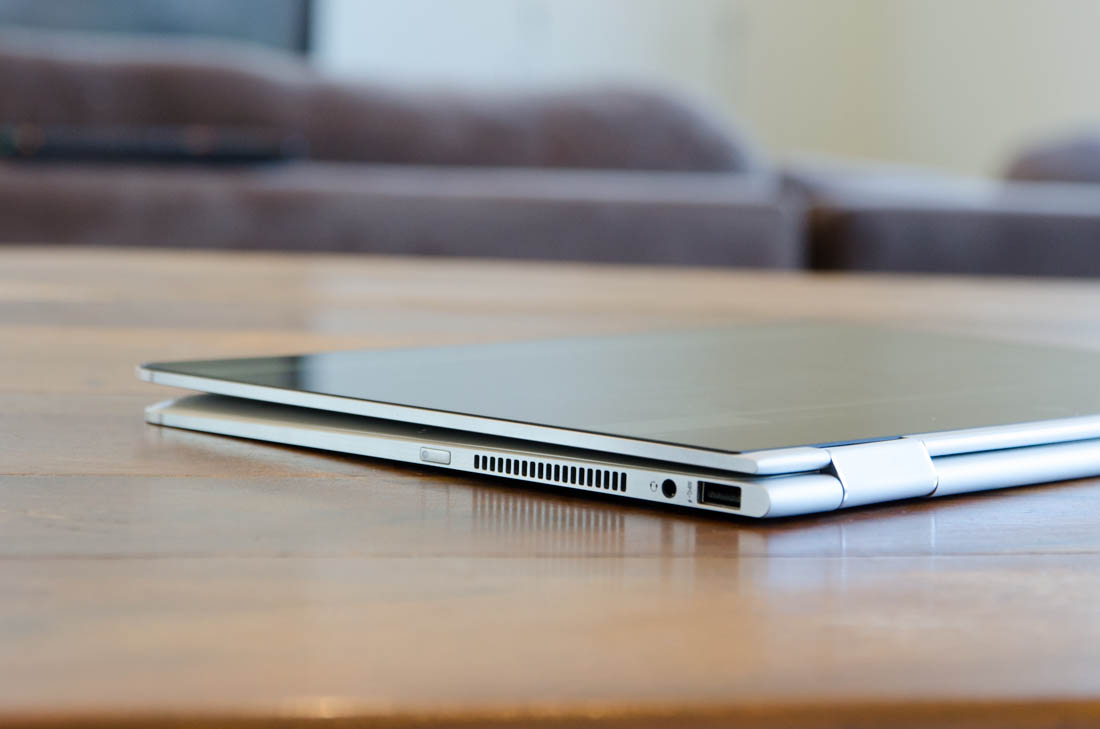High-end laptops released by HP over the last 12 months have seriously impressed me. The HP Spectre is a fantastic ultra-slim and light notebook with a beautiful chassis. When I reviewed the Spectre last year I was amazed at how far HP's engineering and design teams have come in the Windows 10 era.
Alongside the Spectre, at the top of HP's laptop line-up is the Spectre x360, a convertible 2-in-1 notebook that has recently been upgraded to Kaby Lake. But it's not just the internals of this laptop that have improved; HP has also unleashed a design overhaul that makes the Spectre x360 thinner, lighter and more portable than before.
One key aspect about the Spectre x360 - and the biggest point of difference compared to the regular Spectre - is the 360-degree hinge attached to the display. The Spectre x360 is still a 13.3-inch laptop with a 1080p display, but the display can be folded around into a tablet form factor. Evidently, given this, HP has added a touchscreen into the mix.
Like with the standard Spectre, HP has absolutely nailed the design of the Spectre x360.
The hardware found inside this ultraportable won't surprise you, but there are some powerful configurations nonetheless. You have the option of either Intel 'Kaby Lake' Core i5 or Core i7 CPUs, either 8 or 16 GB of RAM, and solid state storage that range from 256 GB to 1 TB. The base model is available for $1,050, while the top end model I received to review will set you back $1,620.
Like with the standard Spectre, HP has absolutely nailed the design of the Spectre x360. Sure, at 13.8mm thick and 1.29kg heavy, this laptop isn't as thin or as light, however, the small amount of added bulk is understandable, as the Spectre x360 contains a flexible hinge assembly and a beefier battery. And it's still a very portable laptop anyway, with dimensions that fall in line with laptops of a similar class. Carrying around the Spectre x360 daily won't break your back or occupy a significant amount of bag space.
Almost the entirety of the Spectre x360 has been crafted from stunning silver aluminium with a fingerprint-resistant matte finish. The base of the laptop is cut from a single piece of metal, giving the x360 a beautiful unibody aesthetic with seamless aluminium edges. The bottom of the laptop does have a removable cutout section that interrupts the unibody design, but this section is necessary to access and install the internals, and mostly out of sight during usage.
Like the base, the lid of the x360 is crafted mostly from a single piece of aluminium, aside from the large glossy glass slab that protects the display. The contrast between the silver lid and black display bezels adds some interest to an otherwise single-tone design, and contributes to the sleek look. The new HP logo is a thing of beauty that fits in superbly with the rest of this premium build.
The main design point of interest here is the triangular-pattern speaker grille that runs above the keyboard. Branded as Bang & Olufsen, the speakers on the HP Spectre x360 are louder than average, although pumping out music at maximum volume does lead to notable distortions. The quality of these speakers is okay in general, although like most laptop speakers, you won't be blown away.
HP has opted for a wedge-shaped base similar to the old MacBook Airs, which leaves little room for ports. Despite the thinness of this laptop and its clear space constraints, HP still managed to cram a full-sized USB port on the left side, as well as two Thunderbolt 3 USB-C ports on the right side. Having two USB-C ports is particularly handy as it allows you to charge the x360 and use a Thunderbolt 3 device simultaneously without any dongles, while the inclusion of USB-A is great for legacy peripherals.
Also, big props to HP for including three USB-C dongles in the box: one for HDMI, one for VGA, and one for Ethernet. These are all the dongles you'll need to use the x360 with typical business equipment.
HP has also included the power button and a volume rocker along the left and right edges respectively; positioning which makes the Spectre x360 still usable in tablet form. As for cooling, there's a large intake grill along the bottom with a single exhaust port on the left side. This laptop operates silently during light usage, but during any sort of processor-heavy work the fan will spin up and produce an annoying high-pitched whine. Expect some areas of the chassis, such as above the keyboard near the speaker grille, to get quite hot as well.
The bezels around the 13.3-inch display are thinner than previous models, particularly on the sides. However, the massive black bars at the top and bottom can detract a little from what's otherwise a great design.
With a 360-degree hinge, the Spectre x360 can be used in several different ways. During my testing I primarily used the x360 as a laptop, because this device is definitely a laptop first and I suspect most users will spend 80 to 90 percent of the time in this mode.
It's easy to flip around the laptop and use the base as a display stand, or in a 'tent' configuration, for better access to the touchscreen. These modes are best suited to desk use, and in the real world they present limited advantages over a traditional laptop setup.
The most compelling case for the 360-degree hinge is using the device in tablet mode. There are certainly some neat usage scenarios opened up by having this ability: it's the easiest way to carry around the laptop and show others information on the screen, and I also found myself using the tablet mode while on my couch to browse the web without the keyboard in the way.
But it's far from an ideal large screened tablet, and like most devices of this form factor, tablet functionality feels like an added bonus rather than a genuine no-compromise usage mode.
With a total weight of 1.3 kg (2.86 lbs), arm fatigue is an issue while holding the tablet unless you rest the device on something. Even without considering the weight, it's not a comfortable device to hold in this mode, as there's a chasm around the edges separating the display and the keyboard base. Feeling the keys on the rear isn't ideal either, and while the slim side bezels look great during laptop use, they make it difficult to hold the device without activating the touchscreen. Clearly HP forgot to implement palm rejection.
While there are notable issues using this - and any similar convertible laptop - as a tablet, it's worth remembering that the tablet mode is a limited use case. You'll likely be spending most of your time with the Spectre in its standard and excellent laptop mode, and when you want to briefly flip the screen around, the issues really aren't bad enough to make a big fuss. Plus, I'd rather have the flexibility provided by the 360-degree hinge than not.
